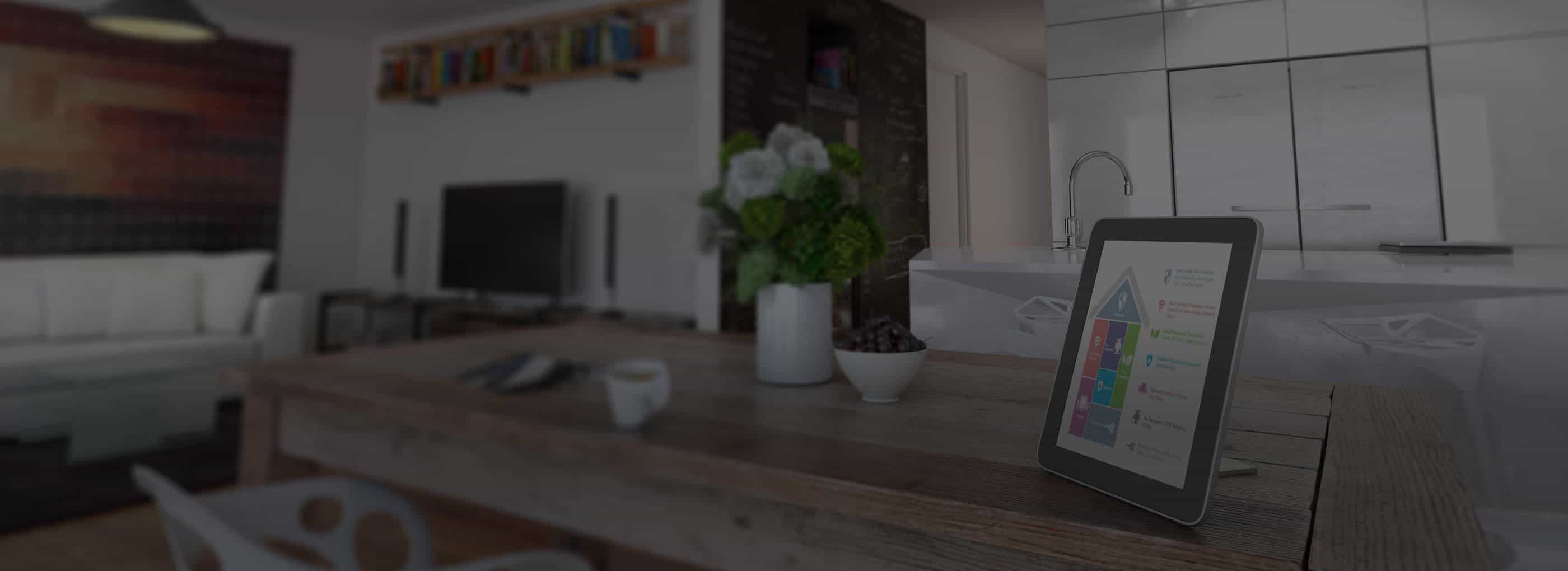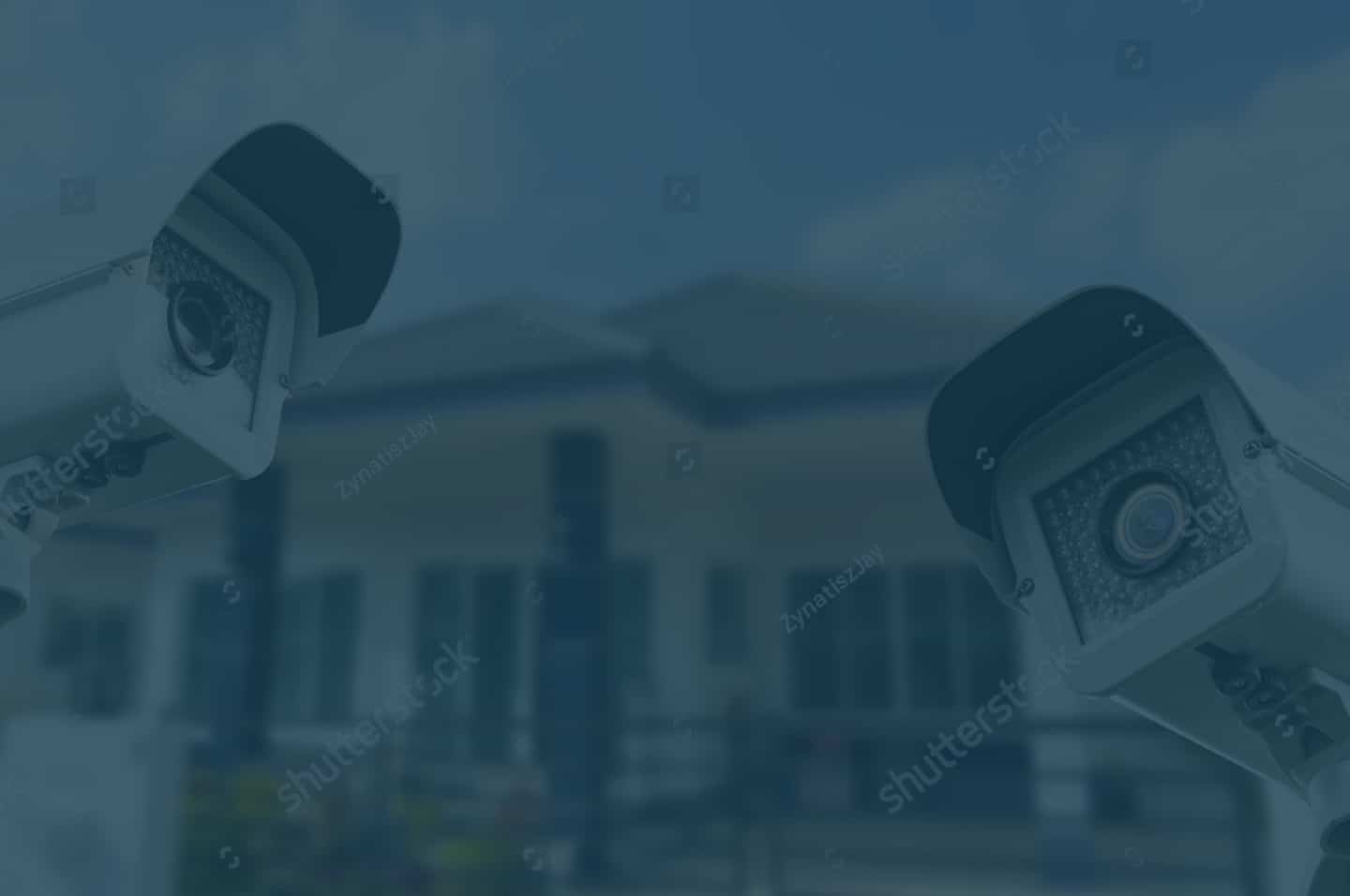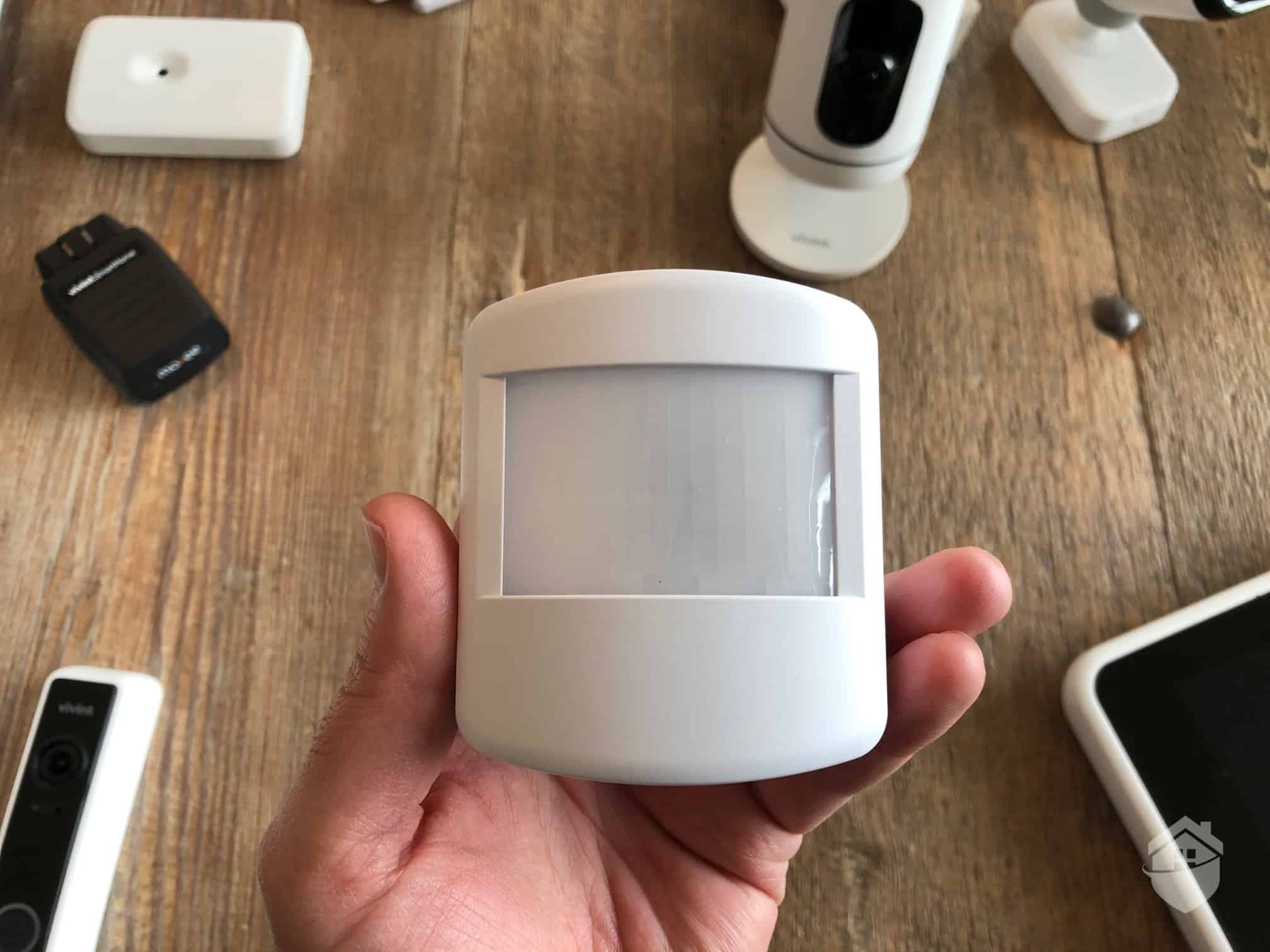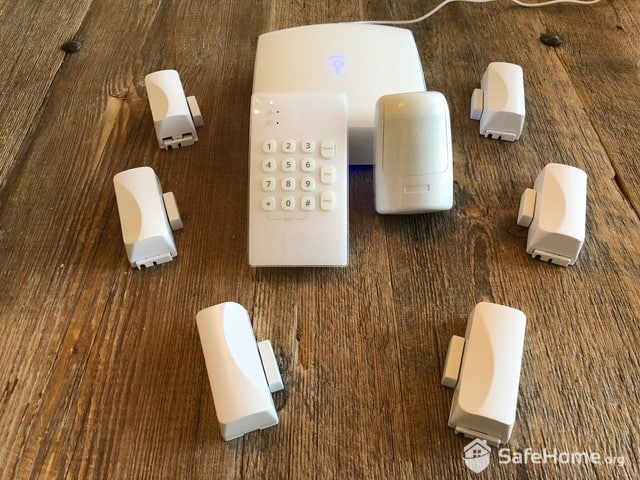It’s frustrating. You’ve finally decided you’re going to invest in home security. You’ve narrowed your search down to a couple of top alarm companies. You’ve got your credit card out and … you can’t figure out what in the name of ADT you’re actually paying for.
I feel your frustration. Sometimes even us home security experts have to jump on the horn with a sales rep to make sense of a quote.
In this home security guide, I’m going to decipher the lingo behind the quote, so you can decide for yourself if you actually need that “video security” service tacked onto your bill, or if you’d be happier using that money for an Amazon Prime membership. We’ll start with a general overview of home security estimates, then drill down into particulars. If you stick around to the end, you’ll find some advice on sidestepping monthly fees altogether.
Did You Know? According to our latest market research, 39 million Americans have installed home security systems to date, with an even split between hardwired and wireless; whereas nearly 64 million households are currently using smart devices.1
Home Security Fees Overview: What You’re Actually Paying For
To hardwire or not to hardwire? That’s the question most homeowners are asking these days. It’s also a pretty reliable determiner of how many extra lines of fees your home security bill will have. That’s because hardwired systems tend to go hand in hand with the three Ps: professional installation, professional monitoring, and professional maintenance.
We’re going to dive deeper into the three Ps in the next section. For now, just understand that if you’ve looked at a home security quote that could go pound for pound against an Apple Terms and Conditions Agreement,2 it’s very likely you’re considering a hardwired home security system with professional monitoring. If you are, don’t go in blind. Here are our favorite hardwired security systems this year.
Now that we’ve established the main culprit behind your triple-decker home security quote — a hardwired security system — let’s break that quote down line by line.
FYI: Still on the fence about what kind of security system you need? No problem. That’s what our guide to choosing a home security system is for.
How does your home measure up when it comes to security? Take this quiz to see how you score, and get recommendation to protect your home.
Understanding Your Home Security Quote: A Fee Breakdown
Before we get into the nitty-gritty of home security quotes, let me dispel a myth. DIY security systems aren’t all fee-free. They definitely can be, but these days, the very best DIY home security brands like SimpliSafe and Cove offer professional installations and monitoring plans, just like ADT or Vivint.
DIY security quotes can get hairy, too. So if you’re sitting at your laptop with your “puzzled man holding credit card” face, staring at a DIY checkout screen with a few more fees than you expected — and you don’t understand why — don’t go anywhere.
Pro Tip: Wired home security devices are physically tied to your home’s electrical wiring system. Sensors and cameras communicate by cable. Wireless systems, on the other hand — plug-in or battery-powered — communicate over radio waves (i.e., over Wi-Fi, Zigbee, Z-Wave, or now, Matter) or via cellular signals.
Installation Fees
Here’s a question. You’re considering a hardwired home security system and you notice your quote requires professional installation and costs $150. Is this a service you need, or is it a gimmick security companies have devised to make even more money?
Answer: definitely not a gimmick, folks, and reasonably priced when you consider the work involved. The good news is that some of the big names in home security will waive installation fees. ADT is one of them. From time to time, I’ve also seen Vivint security packages arrive on doorsteps with free installation.
If you’re going the DIY route, you can also opt for professional installation. With SimpliSafe security systems, for example, installation runs about $125, which could be money well spent if you have the electrical instincts of Clark Griswold.
Equipment Fees
Most home security outfits have two equipment billing options. You can pay for your gear upfront or you can finance it, usually for 24 to 60 months.
Needless to say, if you’ve got the cash, a one-off payment is going to be cheaper. On the other hand, if you’re leaning toward a more expensive hardwired system, shelling out a grand or two on the spot might not be an option. You know your budget a lot better than I do. Whichever route you go, equipment costs are pretty straightforward.
Did You Know? Until you get to the checkout screen and provide your address, taxes won’t be included in any online home security quote.
Monitoring Contracts
Monitoring centers are the brains behind our home security systems. When a sensor or camera in our house detects a possible security event, it sends a message straight to the monitoring center. The center will contact you right away. If it sounds like a real threat, they’ll call the police, fire department, or ambulance for you.
I draw your attention to the word “contract” above. This is an important stipulation to be aware of if you’re considering a hardwired solution, because most of them require a contract. Thirty-six to 60 months is par for the course, with fees ranging from $35 to $60 per month on average. Our home security buyer’s guide covers monitoring costs in depth.
$1,260 (minimum) over three years is a chunk. On the other hand, I’ve lived through a midnight scare where my (self-monitored) security system told me my smoke alarm had gone off. I was 2,000 miles away. What could I do? Call the fire department? Wake a neighbor and ask them to check for smoke? Scary! In the end, it was just bugs in the wires, so everything was fine. But if I’d had the opportunity then, I’m not lying when I say I would’ve forked over $400 on the spot to know what was going on in my home, even if it was a false alarm.
FYI: To receive emergency alerts from your home, monitoring centers need to be able to communicate with your security system 24/7. They can do this via your landline or via a cellular connection. If you have the option — and don’t live off the grid — we recommend quality home security services with cellular connections. A thief can cut your phone line, but he can’t disable cellular service.
Cloud Storage
If you’ve added cameras to your home security system, good job. Having an extra pair of eyes watching over your home is supremely comforting when you’re dealing with a potential emergency situation (see above). The problem is, when we’re talking about home security, nothing is free — not even access to your own camera footage.
I can hear (not almost hear, hear) you sighing. And I truly feel your angst: “It’s my camera. I own it. Why do I have to pay to watch my videos?” To which I’d reply: “Well, you probably own your mobile phone, too, but you pay Dropbox, Apple, or Google to back up your photos.” This is more or less the same idea. And don’t forget that HD video eats up a ton of space.
On the bright side, security companies that want to keep their customers have gotten creative here. SimpliSafe, for instance, includes cloud storage in its $24.99 monitoring fee. Read our SimpliSafe security review to see how Simplisafe’s monitoring stacks up. ADT plans offer an even neater solution in my book: a Google Nest Aware subscription on the house.
So there are plenty of options to choose from. Here’s an overview of what to expect from free and paid cloud storage plans.
Video Storage Plans: Free vs. Paid
| Free | Paid | |
|---|---|---|
| Motion alerts | Yes | Yes |
| Live video | Yes | Yes |
| 24/7 recording | No | Sometimes |
| Video clip storage | 3 to 24 hours | Up to 60 days* |
| Package detection | Yes | Yes |
| Facial recognition | No | Yes |
*With a Ring cloud subscription, you can store clips for up to 180 days.
Pro Tip: It isn’t cloud storage or the highway. There are security camera manufacturers like Lorex and Eufy that record straight to local micro-SD cards. The main advantage of local storage is privacy. The problem with local storage is, well, storage. Depending on how much footage you intend to store, you may need a lot of storage.
Maintenance and Replacement
I won’t beat around the bush. Service fees are where some security companies seem to stick it to their customers. You’ll usually find those fees at the bottom of your quote. Pay special attention to them.
In some cases, extra service fees function like a home warranty or like Apple Care. If your security equipment goes on the fritz, those fees cover maintenance and maybe replacement, depending on what happened. The issue I take with this approach is — well, it’s my equipment, isn’t it? I paid for it. Let me take the gamble.
Alas, we don’t make the rules around here, we just report them. When it comes to service fees, shelling out an extra $20 to $40 per month in insurance might not be optional. The only silver lining here is that, over the years of our financing and/or monitoring contracts, we’re almost guaranteed to need some help with malfunctioning or broken gear. Whether it’s worth the $200-plus we pay per year is another question.
Did You Know? Home insurance companies have traditionally knocked down the monthly premiums of homeowners with burglar alarms.
DIY Home Security: A No-Fee Solution?
Searching for a free security service is kind of like searching for free anything on the web. You get what you pay for, which is sometimes pretty close to nothing. Let me qualify that.
Quality no-fee home security is a possibility. Actually, more than a possibility. Plenty of folks purchase solid home security systems with no strings attached and are happy with them. They pay for their equipment, set it up, download the app, and they’re off to the races. Costs are minimal, and service fees are nonexistent.
We know this is possible because we set up our DIY Cove home security system in about a half-hour and spent under $300 plus tax doing it. The money we saved could’ve flown us to Turks and Caicos.
The problem here is that security companies — even companies whose products we like a lot, like Wyze, for example — have a nasty habit of starting us off with all the bells and whistles and then disabling critical features after the trial period lapses.
In other words, if you’re adamant about not paying anything for your home security, you might get stuck with cameras that do virtually nothing and an alarm that scares the bejesus out of you but leaves you defenseless and disoriented when you have a real emergency.
DIY (Wireless) vs. Hardwired Security Fees Side by Side
| DIY (Wireless) | Hardwired | |
|---|---|---|
| Equipment | $300 to $600 | $600 and up |
| Installation | Optional | Required |
| Monitoring fees | $25 to $40 | $35 to $60 |
| Contracts | Not always required | Always required |
| Equipment replacement | Not included | Sometimes included |
FYI: The first DIY home security system was invented in 1966 by a genius named Marie van Brittan Brown. Van Brittan Brown also created the first security camera with two-way audio.3
Bottom Line
Every box you’ve ever opened in your life has come with padding. For better or worse, this is also true of home security providers. From the cheapest of the cheap to the top of the line, security quotes often come with service charges we don’t need (or at least, don’t completely need), or features we can’t access without getting out our credit cards every month.
The good thing is that the home security scene has changed a lot in the past 10 years. Traditional players like ADT have modernized and now offer packages at more flexible (read “cheaper”) price points. Big disrupters like SimpliSafe and Wyze have branched out into monitoring. With a playing field as diverse as this, striking a balance between affordability and security isn’t just doable, it’s almost guaranteed.
Home Security Quote Frequently Asked Questions
- Do I have to pay a monitoring fee with my home security system?
If it’s hardwired, yes. If you have a DIY system, it isn’t required.
- Is professional monitoring worth it?
In our book, it is. Managing your own security events is stressful and potentially dangerous, whether you’re dealing with them at home or miles away with no way to do anything.
- Do I need a professional to install my home security system?
For hardwired systems, it’s a very good idea — unless you have solid electrician’s skills. Wireless DIY systems were designed for self-installation.
- What happens if my home security equipment breaks?
Some security companies, such as ADT, bake a maintenance fee into your monthly bill. In this case, you might be covered. If you’ve got a DIY system, you’re probably going to have to replace busted items out of pocket.
- Is my home security company legit?
Are you worried? We unfortunately can’t vouch for every security outfit out there, and we’ve run across some truly horrible home security services. But if you’ve picked one of the 10 home security providers we’ve reviewed in these pages, you should have nothing to worry about.






